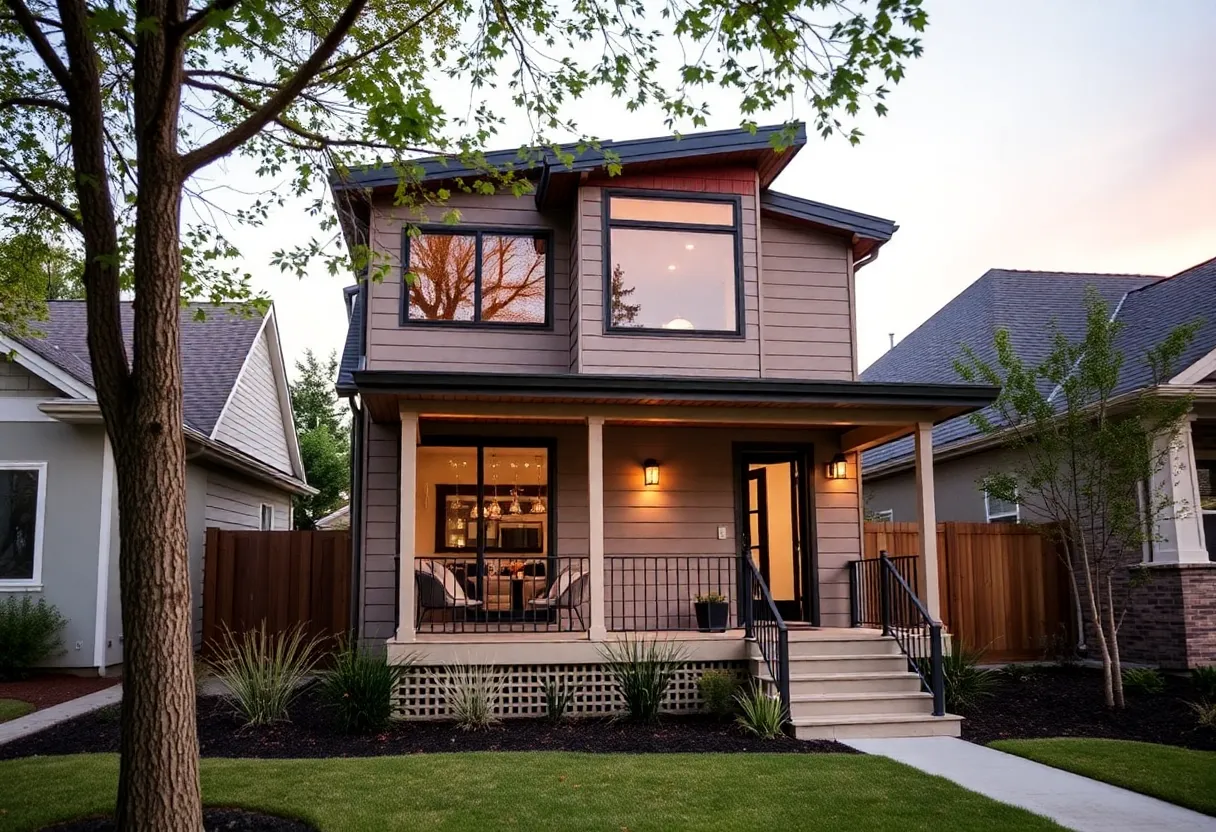News Summary
The SUPPLY Act, a bipartisan initiative in the U.S. House of Representatives, seeks to assist homeowners in building Accessory Dwelling Units (ADUs). This act aims to provide financial support through government-backed second mortgages, facilitating affordable housing options for lower and middle-income families. As cities grapple with housing shortages, the SUPPLY Act aims to simplify mortgage processes and promote ADUs as a solution to escalating housing costs, while also highlighting the economic benefits homeowners can gain from such constructions.
Bipartisan SUPPLY Act Proposed to Aid Homeowners in Building Accessory Dwelling Units
A new bipartisan initiative, known as the Supporting Upgraded Property Projects and Lending for Yards (SUPPLY) Act, has been introduced in the U.S. House of Representatives aimed at tackling the persistent national housing shortage. This legislation seeks to ease the construction of Accessory Dwelling Units (ADUs) for homeowners belonging to lower and middle-income brackets, making it more feasible for them to create additional housing on their properties.
Financial Support for Homeowners
The SUPPLY Act proposes that homeowners can obtain a second mortgage to finance the construction of ADUs, with the government fully backing this funding. Traditionally, homeowners looking to build ADUs have relied on their savings or taken out home equity loans, but this new bill offers them an alternative financing route.
Background of the Bill
This legislation was jointly introduced by Representative Sam Liccardo, a Democrat from California, and Andrew Garbarino, a Republican from New York. Both recognize that addressing the housing crisis is teeming with urgency, and building ADUs may play a pivotal role in increasing available housing at a manageable cost.
Defining Accessory Dwelling Units
An Accessory Dwelling Unit (ADU) refers to a smaller, self-contained residential unit located on the same property as a single-family home. Catering to a diverse array of needs, ADUs often help families accommodate aging parents or adult children who wish to maintain their independence while staying close to relatives. The cost to build these units can vary broadly, typically ranging from $100,000 to $300,000, contingent on various factors such as inspection and permitting fees.
Personal Stories of ADU Construction
One notable example is Christine Wilder-Abrams, a 72-year-old homeowner in Oakland, California. After struggling with mobility in her two-story home, she chose to build a 560-square-foot ADU in her backyard for approximately $350,000. Her daughter now occupies the main house, which has appreciated significantly over the years, having originally cost about $230,000 in 1987 and currently valued over $1 million.
The Rise of ADUs in Urban Areas
With the median home sale price in Oakland now standing at $751,455 as of October, many homeowners are looking toward building ADUs as a practical solution where land requirements are lower than traditional homes. The growing interest in building “granny pods,” or small buildings designed for aging family members, has spiked based on recent Google search metrics.
Financial Benefits of Building ADUs
Homeowners who invest in ADUs can expect a favorable return on investment. On average, properties with ADUs see an increase of about 62% in property value. According to an analysis, the median appraised value of homes in California equipped with ADUs reached approximately $1,064,000, compared to about $715,000 for homes lacking this additional unit.
State Support for ADU Development
The construction of ADUs is further encouraged by various state programs, notably California’s Accessory Dwelling Unit Grant Program, which provides grants of up to $40,000 to assist homeowners. Additionally, initiatives like the Keys to Equity Program aim to help Black and low-income households in Oakland build or legalize their ADUs.
Growth Statistics
Recent reports reveal a marked increase in ADU constructions in the state. In 2018, ADUs constituted 8% of building permits in California, and this figure climbed to 18% by 2022, signaling rising acceptance and demand for these types of housing solutions in urban areas.
Conclusion
The SUPPLY Act represents a significant step toward alleviating the housing crisis in the United States, granting more families the opportunity to create additional housing space through ADUs. By providing homeowners with the financial tools they need to undertake these constructions, the act aspires to contribute to a more equitable housing market.
Deeper Dive: News & Info About This Topic
Additional Resources
- Business Insider: Building ADUs in Backyards
- Wikipedia: Accessory Dwelling Unit
- NBC Bay Area: California Law Scammed ADU Buyers
- Google Search: Accessory Dwelling Units
- SF Chronicle: ADUs Return on Investment in Bay Area
- Encyclopedia Britannica: Accessory Dwelling Unit
- Business Insider: ADUs and Improved Lives
- Google Scholar: Accessory Dwelling Units
Author: Construction CA News
The CALIFORNIA STAFF WRITER represents the experienced team at constructioncanews.com, your go-to source for actionable local news and information in California and beyond. Specializing in "news you can use," we cover essential topics like product reviews for personal and business needs, local business directories, politics, real estate trends, neighborhood insights, and state news affecting the area—with deep expertise drawn from years of dedicated reporting and strong community input, including local press releases and business updates. We deliver top reporting on high-value events such as the Rose Parade, Coachella, Comic-Con, and the California State Fair. Our coverage extends to key organizations like the California Building Industry Association and Associated General Contractors of California, plus leading businesses in technology and entertainment that power the local economy such as Apple and Alphabet. As part of the broader network, including constructionnynews.com, constructiontxnews.com, and constructionflnews.com, we provide comprehensive, credible insights into the dynamic landscape across multiple states.




